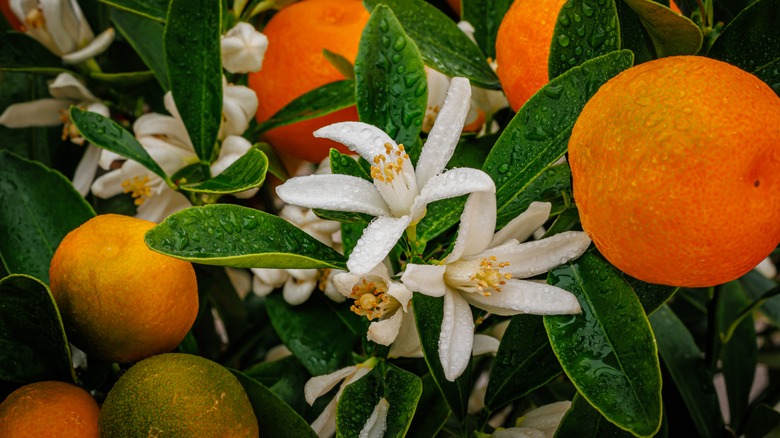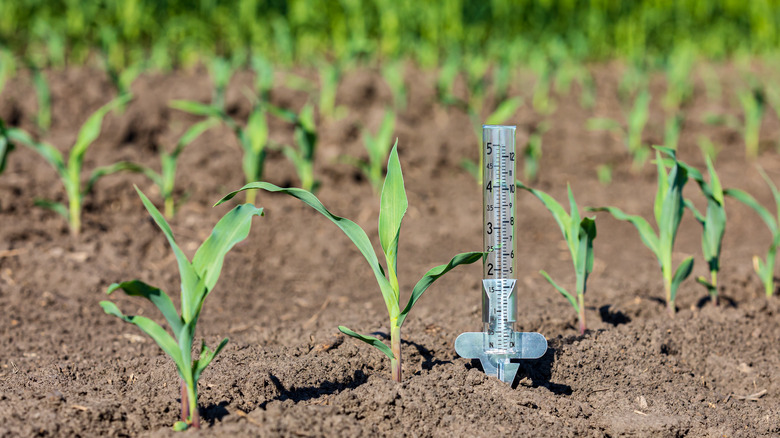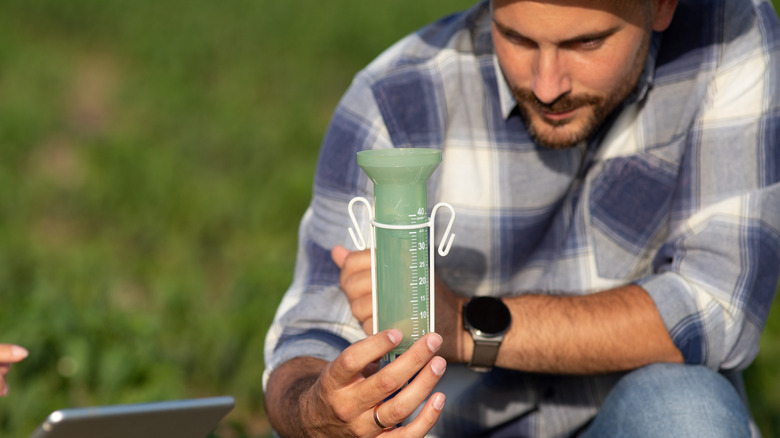The Watering Mistake You're Making With Plants After A Rainy Day
It's often good when it starts to rain, as it means your garden's plants will get the water they need to flourish. But don't make the mistake of thinking that because it rained today, you don't have to water your plants. That may not sound logical, but unless your plants are getting enough water, they will struggle to grow and remain healthy. And if you don't have a rain gauge to measure how much moisture they are getting, there's no real way to know if their needs are being met.
A rain gauge is a very effective tool that measures the amount of water a specific area receives. Placing one in your garden allows you to see how much moisture hit your plants during that last bout of rain, allowing you to make the decision to water or not to do so. Not only is it essential to provide your garden with a consistent level of water, but you also shouldn't water clog them, as that's going to lead to root rot and unhealthy growing conditions.
The good news is there is a wide range of rain gauges on the market, most are easy to use, and they can provide you with a fairly good guide on whether to turn on the sprinkler.
How to choose a rain gauge
Do you water plants after a rainy day? To know what to do, you need to measure how much water fell in your garden area during that rain storm. That's where a rain gauge comes in, as it measures the rainfall very accurately within a given area.
A number of models exist, including those that are simple, manual tools and others that are digital and link to your smartphone on an app (if you really want to make sure you're watering your greens just right). While any product is better than none, look for a gauge that doesn't provide a simple way for insects to get in. You also want to ensure the opening is large enough to allow for more accurate measurements of the area. And it has to be easy to read.
If you're after a digital model, you'll find those that offer a lot of information, including factors like the timing of rain and soil moisture content. Some will allow you to check the amount of rain right from your living room couch, which can be beneficial if your garden isn't right outside your home. The range is a factor in these cases, though, as some will not provide measurements more than a quarter of an acre away.
Consider the amount of work you plan to do, the budget you have, and just how precise you want to measure rainfall. Choose something that's not overly complicated and has good reviews online for easy use and accuracy.
How to use a rain gauge to determine if you should water after a rainy day
Follow the instructions for the placement and use of your rain gauge based on what the manufacturer recommends. Accuracy matters here. Plants have different moisture requirements, and taking the time to get to know this information about the specific plants you have is a good first step. For a more basic approach, most plants need at least one inch of rain every week to thrive. Some recommend watering your garden once every other day or about three times each week.
If it rains, use your rain gauge to see how much rainfall occurred in your garden during that period. You can measure rainfall over a period of time, such as a week, to find out if you're hitting the desired watering. However, the gauge will give you a better idea of what's really occurred. Typically, rain gauges will measure by a tenth of an inch. If you see the water level has reached the .50 line, it means about half of an inch of rain fell.
Remember, too, that the amount of rain falling is dependent on many factors, including the wind, the length of the shower, and how hard it fell. A hard, short rain doesn't mean all of that moisture penetrated into the soil, as it could have run off. The bottom line here is that you should often water your garden after rainfall unless your gauge shows it's received enough water.


